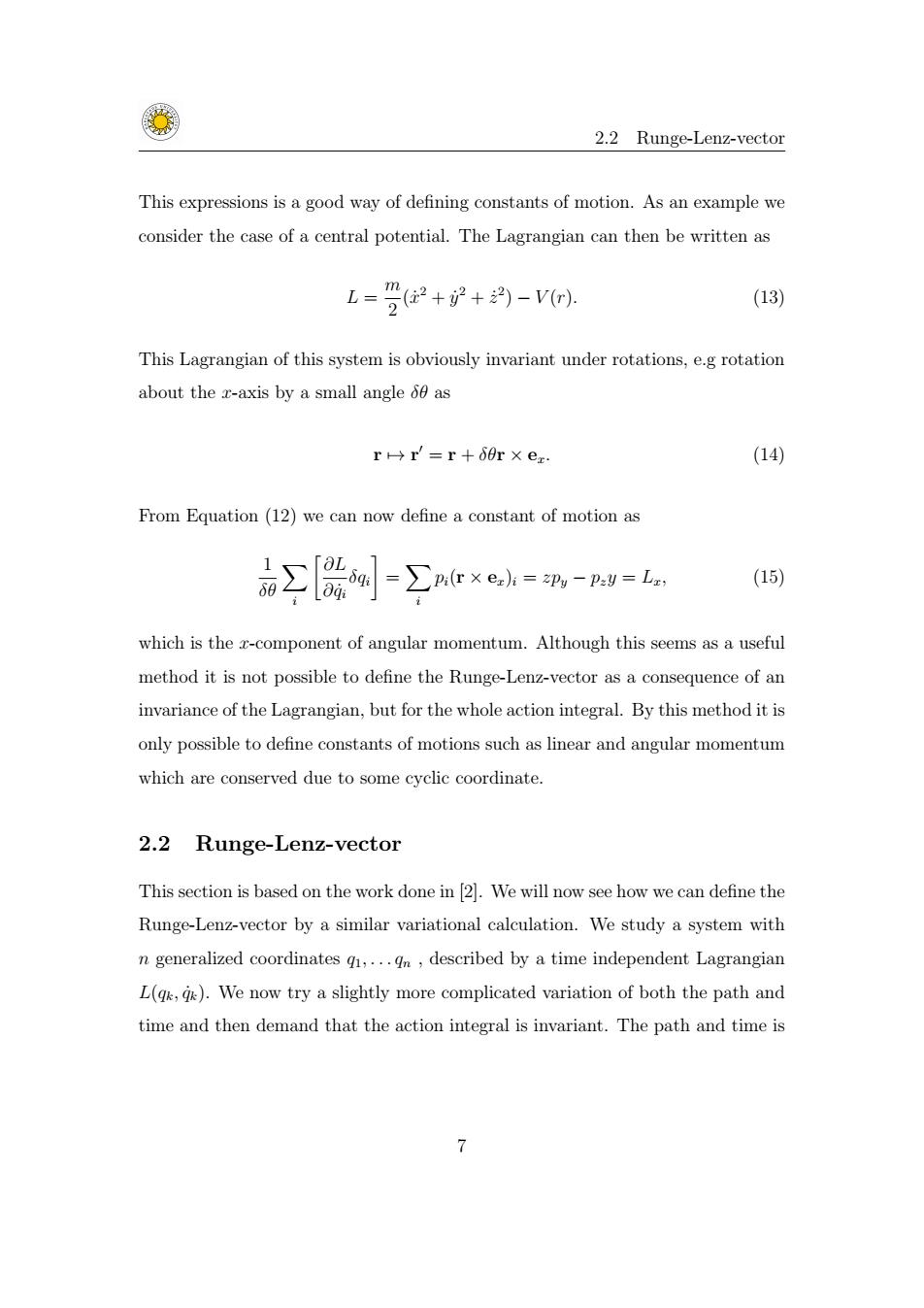正在加载图片...

2.2 Runge-Lenz-vector This expressions is a good way of defining constants of motion.As an example we consider the case of a central potential.The Lagrangian can then be written as L=罗2++)-V) (13) This Lagrangian of this system is obviously invariant under rotations,e.g rotation about the x-axis by a small angle 60 as r→r'=r+60rXex (14) From Equation (12)we can now define a constant of motion as 1 [aLs g=∑nc×eh=py-p.=L, (15) which is the r-component of angular momentum.Although this seems as a useful method it is not possible to define the Runge-Lenz-vector as a consequence of an invariance of the Lagrangian,but for the whole action integral.By this method it is only possible to define constants of motions such as linear and angular momentum which are conserved due to some cyclic coordinate. 2.2 Runge-Lenz-vector This section is based on the work done in [2].We will now see how we can define the Runge-Lenz-vector by a similar variational calculation.We study a system with n generalized coordinates g1,...gn,described by a time independent Lagrangian L(ge,)We now try a slightly more complicated variation of both the path and time and then demand that the action integral is invariant.The path and time is 72.2 Runge-Lenz-vector This expressions is a good way of defining constants of motion. As an example we consider the case of a central potential. The Lagrangian can then be written as L = m 2 ( ˙x 2 + ˙y 2 + ˙z 2 ) − V (r). (13) This Lagrangian of this system is obviously invariant under rotations, e.g rotation about the x-axis by a small angle δθ as r 7→ r 0 = r + δθr × ex. (14) From Equation (12) we can now define a constant of motion as 1 δθ X i ∂L ∂q˙i δqi = X i pi(r × ex)i = zpy − pzy = Lx, (15) which is the x-component of angular momentum. Although this seems as a useful method it is not possible to define the Runge-Lenz-vector as a consequence of an invariance of the Lagrangian, but for the whole action integral. By this method it is only possible to define constants of motions such as linear and angular momentum which are conserved due to some cyclic coordinate. 2.2 Runge-Lenz-vector This section is based on the work done in [2]. We will now see how we can define the Runge-Lenz-vector by a similar variational calculation. We study a system with n generalized coordinates q1, . . . qn , described by a time independent Lagrangian L(qk, q˙k). We now try a slightly more complicated variation of both the path and time and then demand that the action integral is invariant. The path and time is 7